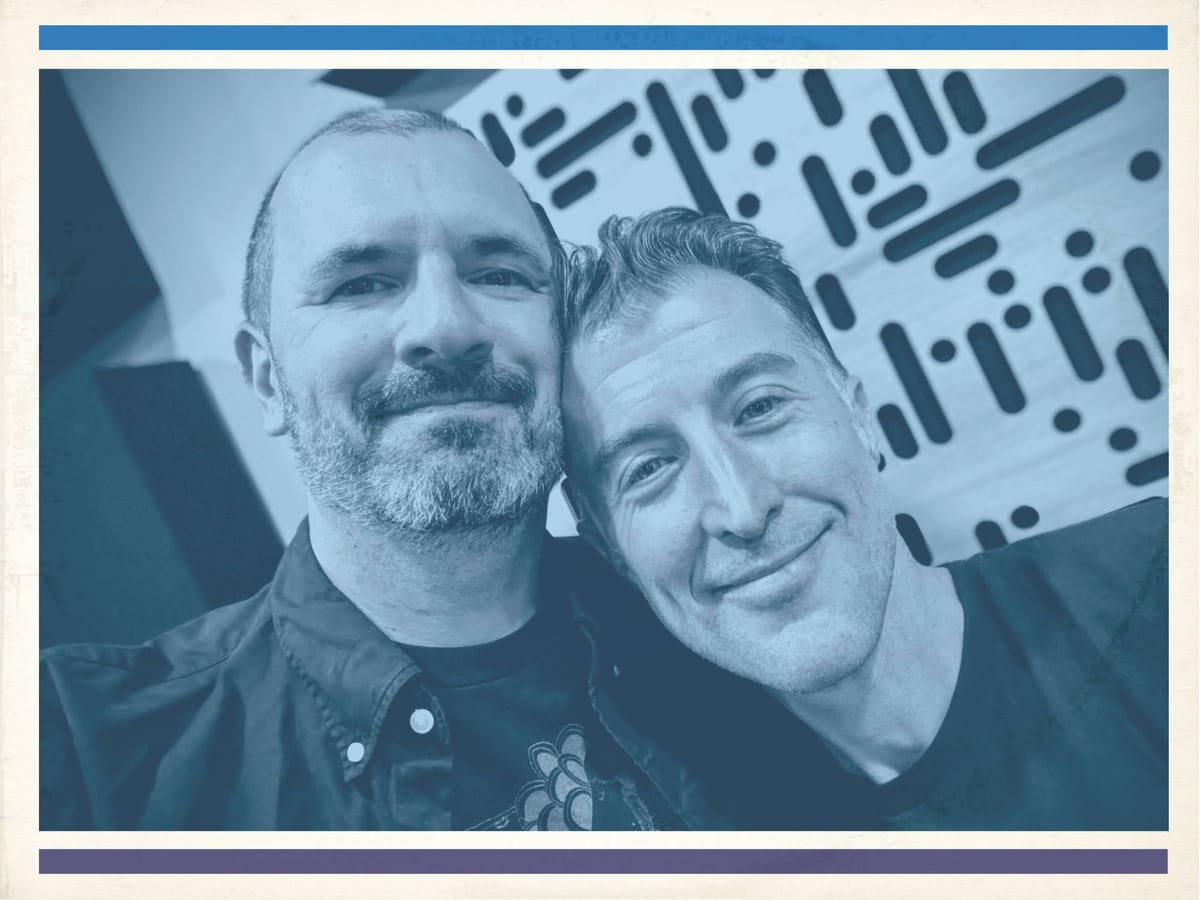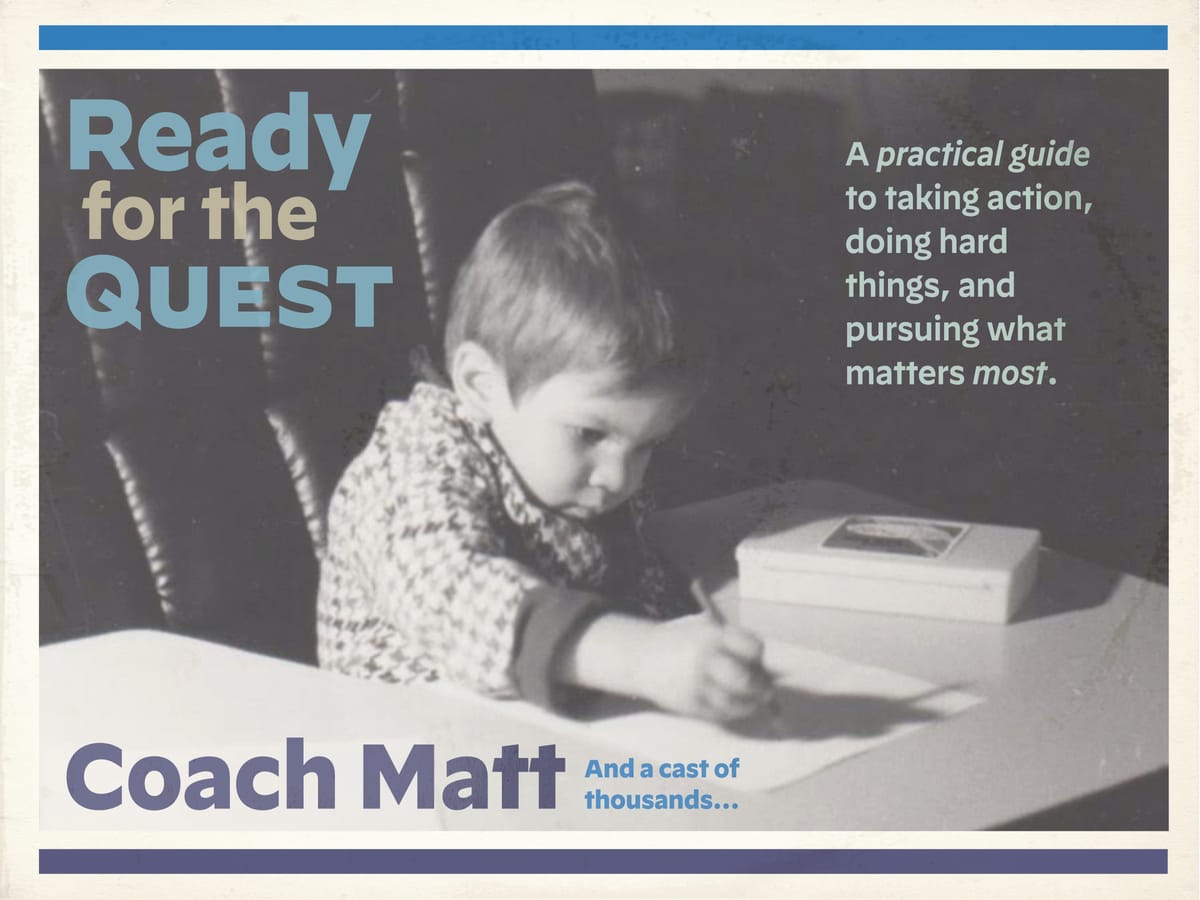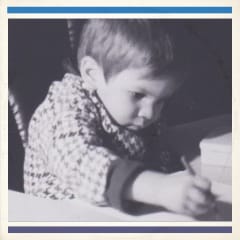Ready for the Quest
NOTES // Chapter Four, part 1
00:21 // "We are in the habit of imagining our lives..."
This is David J. Glover, reading from Katherine May's book Wintering: The Power of Rest and Retreat in Difficult Times. Ooooooo, I do love a good retreat, and rest is highly under-rated amongst over-achievers. For more reinforcement on this subject, check out Rest Is Resistance by Tricia Hersey.
As I said, James Clear posted this quotation on his website (which collects his newsletter) just two days before I was writing this chapter. Thank you, James. You were right on time.
4:04 // "Do not assume that you have to have..."
That's Mark Snyder – dear friend, playwright, podcaster, storyteller – reading the words of Anne Bogart. Mark visited me in Columbus in September, 2024, to record a long conversation about this audiobook. (It's included as a bonus when you purchase Ready for the Quest.) You can hear some fun excerpt from that conversation here →

As for Anne's writing here (from the very end of A Director Prepares) – It changed my life, right? Yes, it really did. It moved me to action when I really needed it. I had left one theatre company and not yet started another. I was in Iowa City, hanging out with a couple of artists (Sean Lewis and Jennifer Fawcett) who were absolutely not waiting for anything. Jen told me a story about "working with your available light" and that sure stuck in my head.
Thanks to Anne's words, I decided to make a new piece of theatre (The Absurdity of Poetry) no matter what, working with whom (myself and Dave Wallingford) and what (a ladder, a typewriter) I had immediately available to me. I did not wait.
6:12 // "I was talking to my friend, John Jardin..."
John Jardin is my token Canadian friend. (LOL.) We have talked (via Zoom) most weeks since mid-2021. He and I went through our coach training together (with the The Flourishing Center) and started coaching each other soon after that. We've maintained a strong friendship ever since.
If you're interested in cultivating a life that’s alive with purpose & meaning, and that’s deeply fulfilling in your soul – go see what John is up to.
6:37 // "Nature does not hurry..."
"Nature does not hurry, yet everything is accomplished." - Lao Tzu
From Wikipedia:
Laozi (Chinese: 老子), also romanized as Lao Tzu and various other ways, is a semi-legendary ancient Chinese philosopher and author of the Tao Te Ching, the foundational text of Taoism.
John also mentions Kate Northrup, who describes herself as a "Bestselling Author, Nervous System Alchemist & Money Empowerment OG." Rad!
12:43 // "Do not wait. And at the same time, be patient."
Once again, ladies and gentlemen, Anne Bogart, A Director Prepares.
13:14 // "James Prochaska has been working since the '70s..."
Working with coaching clients, I pretty regularly talk about Prochaska's Stages of Change early on in our work together. So often, we find ourselves walking all over hill and dale searching for a key to unlock the change we want and immediately alter our behavior; but we could save ourselves a lot of trouble if we understood that we're even though we want the change, we're not actually ready to make it happen. This is what Prochaska's Stages of Change help us understand. And once we understand, we can do something about it.
The Transtheoretical Model (also called the Stages of Change Model), developed by Prochaska and DiClemente in the late 1970s, evolved through studies examining the experiences of smokers who quit on their own with those requiring further treatment to understand why some people were capable of quitting on their own. It was determined that people quit smoking if they were ready to do so.
A few of the books from Prochaska, DiClemente, and Norcross:
15:06 // 🎵 music
The music in this chapter is my attempt at writing something that could fit onto a Carly Rae Jepsen album. (Though, it also had to be something that could sit in the background behind all this talking.) If you only know CRJ from "Call Me Maybe," you owe it to yourself to do some research.
My conversion moment came in 2016. I was on assignment for The Agit Reader, taking photos at the Pitchfork Music Festival in Chicago.


Here are a couple of my pix from that afternoon.
At the time, I wrote...
Carly Rae Jepsen, meanwhile, may have been the biggest surprise of my weekend. I was utterly unable to take my eyes off her. Whatever star power may be, she has it in spades. Not only that, she genuinely seemed to be having the time of her life.
Luckily, Pitchfork has archived that afternoon performance on YouTube. If you carefully, you can see me in front of the crowd with my camera.
Since that fateful weekend in Chicago, I've been a loyal fan. I enjoy most everything she does. I mean, have you heard her duet with Rufus effing Wainwright?!?
There's one song of hers, though, that is precious to me in a different way. The song is "Making the Most of the Night," from the E•MO•TION album. It was co-written by Sia and HAIM, which might explain why it's so gutting and also such a beastly jam. The chorus starts, "I know you've had a rough time / But here I come."
PS. I know of another Columbus writer who's a big fan of CRJ – Hanif Abdurraqib. Check this out.
19:06 // "How much time should we spend planning...?"
Someday I'll come up with a solid answer to this. Right now, my best guess is that there's a threshold, a perfect intersection. You want to do the kind of planning that saves you time in the long run. But, at a certain point that planning stops drops below a certain amount of time-savings – the returns are no longer worth the investment – and that's the right moment to stop planning.
It can be really hard to determine when you're hitting that threshold. Do your best.
27:05 // Lever of the Day
Tim Ferriss calls his version of Fear-Setting "the most important exercise I do every month." I especially like the version published by the people at Mindful Ambition dot net →

In the next chapter we'll talk about Pamela MacClean’s "Cycle of Renewal." If you come back and revisit this exercise you'll find it really useful when you’re in The Doldrums and trying to decide if it’s time to move on to something else. And, it’s a useful exercise if you’re in the Cocooning phase and you’re exploring your options. (Just make sure you’re surrounding this exercise with plenty of rest and recovery - proper cocooning activities.)


